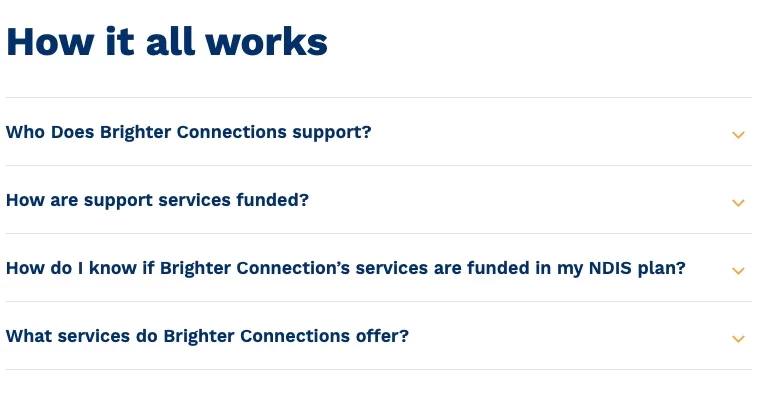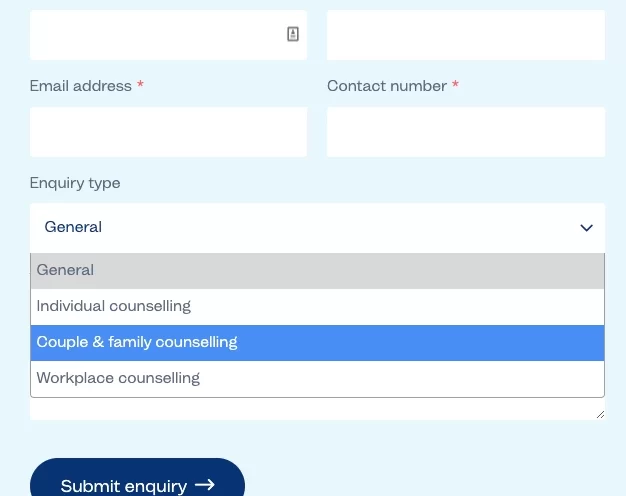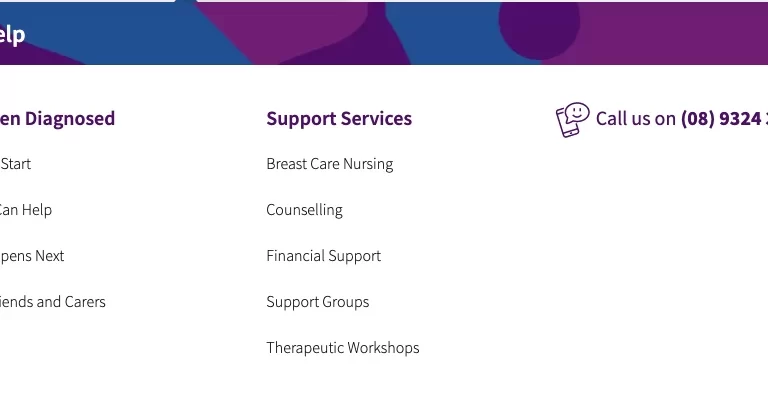Key points on this page:
- The healthcare sector is desperately in need of digital support.
- Having a website that is user-friendly, rich in information, and optimised can take a huge weight off your organisation and free up time.
- Progressive healthcare organisations should also consider implementing a CRM, online booking system, and AI-informed targeting for a better experience for both staff & patients.
Summary
The healthcare sector faces its own unique digital challenges, and it’s vital that we find solutions to them.
We depend on the healthcare sector to be there, always. In a pandemic, that goes to a new extreme.
Yet many health organisations are underfunded, overworked and understaffed. There is barely the time for them to fulfil their regular duties; how can they be expected to also manage healthcare moving online, in the middle of a pandemic?
We’ve been fortunate enough to work with a number of healthcare providers, NDIS providers and not-for-profits, and it’s clear that there is an overwhelming need for better digital practices.
But how can we solve the problems that these people are facing, without creating extra work for them?
Problem: Too many people are asking the same questions
As a health organisation, continued investment in your website can be expensive, time consuming, and overall seem like an exhausting ordeal. Plus, especially as a not-for-profit, it may be something you can only do with funding.
The reality is that, for many health organisations, your website ends up saving you time. If you’re getting overwhelmed with people asking the same questions, an option could be using your website as an information resource for you to refer your clients to.
Solution: Provide the right info, right there on your website
How many calls do health organisations field every single day that could be answered by one page on a website? The answer is probably too many. But, even if that information is available, an excess of information and poor user experience can easily push away a patient and lead them to picking up the phone.
A good website leads the user on a journey, where they ultimately and quickly find the answer they need.
When we helped create Brighter Connections’ new website, our collective goal was to create an experience that was accessible, simple, and didn’t cause unnecessary stress. The navigation is split into three sections: About, Services & FAQs.
Then, there was a ‘Call us’ or ‘Contact us’ option front and centre.
Everything a person would need, in one glance.
When the user navigates to a Service page, the key information is highlighted in a simple yellow text box at the top. This ‘call out’ meant that users can get a summary of the page without wading through content. It’s friendly, it’s easy, and it’s helpful.

When you’re looking for information online, you don’t want to jump through hoops to find it.
And if you know the questions that people are asking down to a T, adding in a simple FAQ block (like the one below) can make your life so much easier.

Problem: We’re getting enquiries, but we can’t handle all the phone calls.
The trick to this one isn’t not answering the phone (though sometimes it might seem like the only option). The trick is, rather, to funnel your users through your website to create manageable, categorised online conversations.
Solution: Contact forms & live chats
The online contact is a manageable one. Used properly, it can make the lives of your staff much, much easier. Whether a contact form or a live chat, it funnels users through a contact system where you can respond to them within your own time, without being forced to answer calls 24/7.
It also means that you can easily differentiate between enquiries and delegate to the relevant person. A simple checkbox or dropdown that says what the user is looking for allows for a seamless and easy experience.
Something as simple as the below (from our client’s website Clear Health Psychology) can make the process of bringing in a new patient or client much easier.

Then, there’s the live chat. We’re a bit torn about this one – live chats can be great for ease of contact, but they can also slow down websites significantly, which is bad for both user experience and SEO. It’s ultimately up to the situation as to whether it’s the right choice.
If you do go with the live chat, you might want to consider something simple like Brecken Health Care’s chat. You can log in with Messenger and manage the conversation through Facebook if you prefer, or you can just continue as a guest.

Problem: People can’t even find our website
Your website can be an excellent resource for your clients to access information about your organisation, as well as contact you.
Even if you’re not actively searching for new clients, your website’s discoverability is incredibly important to ongoing business, as well as existing clients finding you and accessing information.
Users need to know opening times, read COVID policies, and find out about Telehealth options without having to go through an overly complicated process.
Many organisations were underutilising their websites prior to the pandemic. But once business was pushed online, it became very important that all companies had easy-to-use and strong websites that you could find without difficulty.
Solution: A user-first website that’s SEO-friendly
Your business may be outgrowing your website. There’s only so many things you can tack onto an old website without throwing it all out and getting a new one.
We’ve had experience with health providers who have found that their current website simply doesn’t meet their requirements anymore, and they need a new one that both reflects their rapid growth and ever-evolving values. The modern health organisation requires:
A straightforward way for users to access Telehealth info.
Easily discoverable COVID policies.
The ability for users to book through your website or to easily navigate off to the respective booking engine.
Your website might not seem that important when you’re helping people in need, day in and day out. But if your clients aren’t finding you at all, then it’s a problem. One of our clients, Brecken Health, wasn’t appearing on Google at all for search terms around their allied health services.
They weren’t even in the top 100 for ‘Bunbury physio’. It seems minor, but it meant that that side of the business wasn’t getting the attention it needed.
Since we started working with them, Brecken has jumped up to first page for ‘Bunbury physio’, ‘Dietitian Bunbury’ and 1st place for ‘exercise physiology Bunbury’, among others. This has seen clicks through to the website from these keywords increase significantly.
People should be able to use your website easily and find it easily. No compromises.
Problem: Our clients feel disconnected from us
Historically, healthcare has always been person-centred. So, the worry that moving online would take away the heart of healthcare is a reasonable one.
In an interview towards the end of 2021, Steve Gray, Chief CIO of University Hospitals Bristol and Weston NHS Foundation Trust, said, “I’m a sceptic as to whether any of the things that have been spawned as a result of Covid, and the feeding frenzy of certain things that came up in the wake of it, actually constituted improvements.”
But the answer to these ‘non-improvements’ isn’t necessarily abandoning digital altogether. Instead, it’s about focusing on ways that you can improve the digital communication experience.
Solution: Connect with your clients, digitally
This can mean:
Making it easy for your clients to talk one-on-one, often on video call (Telehealth)
Ensuring that information is easily accessible and inclusive.
Communicating with clients and potential clients in a way that is custom to them, unique, and friendly. Chat bots have their place, but nothing replaces a human.
Make the journey comfortable and welcoming. When we designed Breast Cancer Care WA’s website, we designed it to be easy to navigate and welcoming, as if you’re returning to an old friend.
‘Where do I start?’ ‘What’s next?’ are all questions a person recently diagnosed with breast cancer might ask. The website was there to be that helping hand and a comforting source of self-education.

The big picture healthcare hurdles
The 2021 HIMSS Future of Healthcare Report found that 80% of healthcare providers plan to increase investment in technology and digital solutions over the next five years. The sky’s the limit when it comes to digital healthcare. Here’s some ways that growing organisations can bring tech into their businesses:
- Use your website as a tool to find staff. Hire new staff straight through your website and make the hiring experience streamlined and digital. Find the people who are as passionate as you about what you do.
- Move online & integrate with online booking systems/CRMs. Choose the right booking system for your needs that will scale with you and ensure that you’re tracking online bookings and measuring costs against benefits.
- Track the value of your website users. Are your investments in your website or in marketing paying off? Where are your bookings coming from? Without analytics tracking, it’s hard to know. Add Google Analytics to your website – or have your agency do it for you – and set up tangible goals that provide insight into real, measurable results.
- Cultivate better user experiences with AI & machine learning. AI might sound like a scary word, but it’s not. Really. Bring AI into your website experience and present tailored information to your users.
Better digital experiences for healthcare means less work
Healthcare workers and organisations keep things running smoothly. But too often, it’s easy to forget the importance of digital in such a human-focused equation. The pandemic pushed that reality to the front.
At Dux, we love working with great companies doing meaningful work in the health space. Let’s work together. Contact us via our website or call us on (08) 6119 8461.